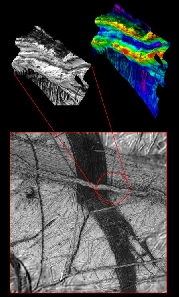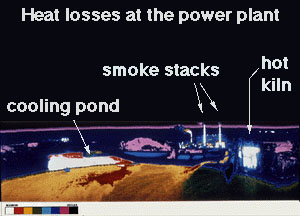Exploratour - The Surface of Europa
Click on image for full size
NASA
More images like this one may be found in the Jupiter image archive, linked at the bottom of this page.
Scientists are excited about the possibility of an ocean. If the crust of Europa is not too thick, light from the sun will likely shine through this layer into the ocean beneath. On Earth, we know that there are life forms which can exist under conditions such as these. With this in mind, NASA has set a priority to send another mission to explore Europa further. Read more about this mission in the Exploratour: NASA's Exploration for Life, linked at the bottom of this page.
This is page 20 of 20












